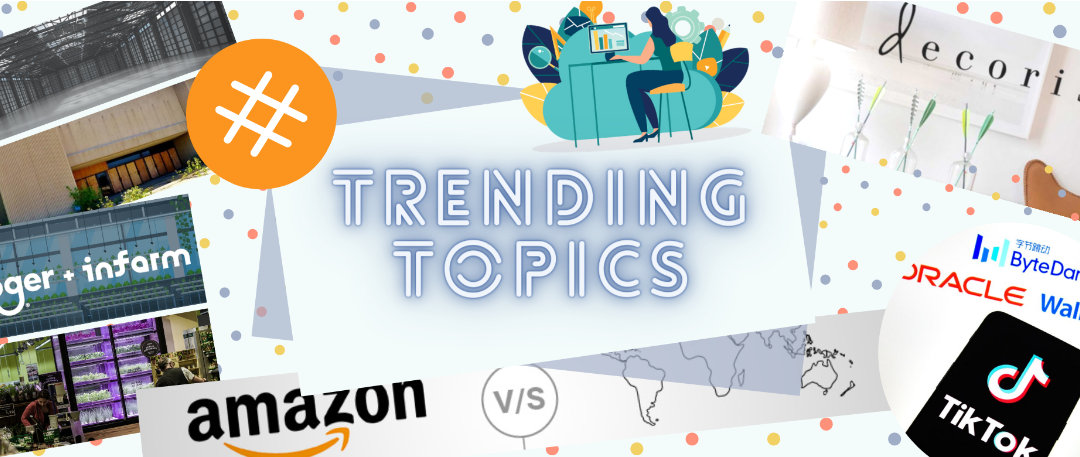Amazon Ramps Up COVID Testing for Warehouse Worker
Let’s start this month’s #trending content off with Amazon. First and foremost, the company plans to expand large-scale COVID testing program for warehouses. The e-commerce giant is now testing warehouse workers in at least 23 states for Covid using its own federally certified laboratories to process samples. Ramped up testing measures are all part of a secretive Amazon initiative called Project Ultraviolet, which aims to develop the diagnostic capacity to regularly test all of the e-commerce giant’s several hundred thousand warehouse workers for the virus, regardless of whether they are showing symptoms.
It could be read as ironic then that the eCommerce juggernaut also plans to put 1000 warehouses in suburban neighborhoods. These micro-facilities will likely not receive the same full-service COVID testing treatment, but rather are the company’s response to Walmart’s praiseworthy same-day delivery.
This is also a reminder of the great lengths Walmart has gone through in its campaign to compete with Amazon. But they are not the only ones. Check out last month’s #trending blog for a full rundown of the rebel alliance and what companies are doing to level the playing ecommerce playing field.
 Walmart Fulfillment Services Strike Out with Two-Day Shipping
Walmart Fulfillment Services Strike Out with Two-Day Shipping
What’s interesting is that while Walmart may be out ahead of the pack when it comes to same day, their two-day strategy is not exactly working according to plan. According to Marketplace Plus, Walmart Fulfillment Services (WFS) which allows third-party sellers to store and fulfill inventory from Walmart’s warehouse is powering less than 0.1% of the two-day enabled products. Only 150 sellers out of the 54,000 total have started using the service launched six months ago.
Yes, same-day shipping is an objectively faster and more efficient service than two-day. And yet, the fact that Walmart may be better than Amazon at what is in theory the higher value product, does not seem to matter. The notion of two-day shipping is more or less synonymous with Prime. One might even argue that Prime is the Kleenex of two-day shipping! That kind of marketing is hard to beat, no matter how high Walmart and the rest of the rebel alliance raises the bar.
 Even Corner Stores Have Moved Online
Even Corner Stores Have Moved Online
Still in the realm of eCommerce but a slightly different note, online delivery service GoPuff is having a very good pandemic. Orders are up four-fold at the SoftBank-backed startup. Many believe COVID success has a lot to do with a model wherein each of the company’s 200 mini-fulfillment centers operates like an eCommerce convenience store. Half of GoPuff’s locations were set up just this past year.
Picture 3,500 employees working around-the-clock shifts, jostling past one another to grab, pack and send out the overpriced impulse buys that customers in 500 cities are punching into their iPhones: a $6 pint of Ben & Jerry’s Americone Dream ice cream at 9 p.m.; a six-pack of Budweiser for eight bucks minutes before the first pitch; a new mother’s midnight call for a box of 140 Pampers Swaddlers ($34).
 Craft Masks Earn 3X Growth for Etsy
Craft Masks Earn 3X Growth for Etsy
But GoPuff isn’t the only digitally native company winning in the pandemic. The homemade crafts marketplace, Etsy, has become a Wall Street darling during the pandemic. Despite a downtrend throughout much of 2019, Etsy stock has nearly tripled since March. Experts cite the federal government mandate on face masks in public as a main driver to website traffic spikes. At one point, searches for the term “face mask” surged to nine per second.
 Regional Carriers a Haven from Holiday Rates
Regional Carriers a Haven from Holiday Rates
Even the most unsung supply chain heroes – the regional parcel carriers – are making headlines this month after massive spring success. An average of 17% of retail volume went to regional carriers in the first seven months of the year, compared to 3.8% in 2019 and 6.2% in 2018. This has become increasingly common throughout the year, with 24% of volume traveling with regional carriers in July.
And now that peak season has arrived, shippers are feeling the sting of seasonal surcharges from the big three (UPS, FedEx and USPS). It’s only logical that the added holiday order volume will lift regional carriers even higher up on the graph.
Wise Words for Brands from eCom Marketer VotPo
Speaking of the holiday peak season, eCommerce marketing platform, yotpo has some sage advice in preparation for Black Friday. Here’s a few big takeaways from the 400 + digital brands surveyed…
-
Holiday shopping will start earlier than usual this year and cyber November is right around the corner…
-
Brands are generally optimistic about sales…
-
…but are playing Black Friday inventory close to the chest
-
Marketing with partnerships, partnerships, and more partnerships
-
Deep discounts, high order volume. That’s the motto.
-
Mobile first has its big break this season
-
BOPIS (buy online, pick up in store) is the weirdest acronym of the 2020 peak.
Of course, Amazon’s got the drop on the early holiday shopping. Prime day 2020, which was conveniently pushed to October in response to COVID, is set to fuel record year end sales.

